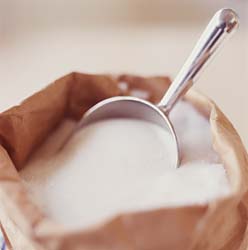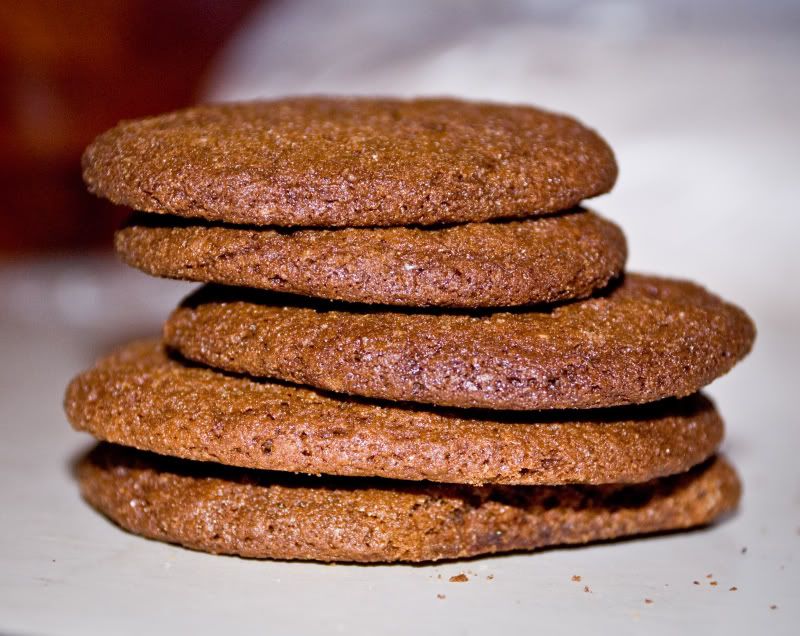One of our steps has been to cut out sugar. Ok, well, my step. This has been a blessing and a curse. The more sugar I cut out, the better I feel, but the more I crave it. It is still hard for me not to overindulge, and even small to modest amounts can send me into a downward spiral. The last time I had a coke was over 6 months ago, and I had a migraine for 3 days.
Americans eat an average of 22 teaspoons of sugar a day!! Sugar raises blood pressure, reduces HDL (good cholesterol), raises triglycerides, triggers abnormal insulin surges, and makes us hungry for more. The American Heart Association recommends limiting our intake to 6-10 teaspoons a day. Guess how much a single glass of orange juice contains? The equivalent of 11 teaspoons!!
We all probably know that sugars end in –'ose, but I still get confused about the differences. Basically sucrose comes from sugar cane or sugar beets. Fructose, maltose, and dextrose come from fruits and starchy plants. Lactose comes from dairy products.
The Glycemic Index (GI) ranks how food affects our blood glucose levels. Table sugar (sucrose) has a GI of 60. Eating below a GI of 50 is recommended to control blood sugar naturally.
Fructose (fruit sugars) is commonly thought to be benign since it dose not raise blood glucose levels the way glucose does. However, fructose is converted to triglycerides in the liver (fats associated with heart disease) and interferes with the absorption of minerals.
The good news is that there are some ways to still use sugar. Some are even nutritious to an extent. Here is a review of some of those varieties:
Rapadura—pure juice extracted from sugar cane. It is not cooked at high heats, and it has not been separated from the molasses…so it has more nutrients, vitamins, and minerals. It will not affect your blood sugar as much as a more refined sugar. Many people (like me!) that get headaches with white (refined) sugar can eat rapadura without any problem.
Sucanat—similar to rapadura but the sugar stream and molasses stream are separated from each other during processing and then reblended.
Turbinado, Demarara, and “Organic Raw Sugar”—all refined, although not as much as white sugar. The cane juice is heated, clarified, dehydrated, and then spun. Sometimes chemicals are used during the clarifying process. The crystals that are formed are basically empty carbohydrates. “Organic Raw Sugar” does not mean it is unrefined. It means it was grown with organic agricultural methods…and then refined. The molasses has been mostly removed, and there is not much nutritional value left.
Brown sugar—white sugar (see below) mixed with molasses.White sugar—the most refined form. The sugar is washed with a syrup solution, then washed with hot water, clarified (chemically), decolourized (you don’t want to know how), concentrated, centrifuged, and then dried. Crystallized refined sugars are pure sucrose devoid of any nutrition other than calories. Refined sugar can actually compete with and remove vitamins and minerals.
Some other natural, whole sugars in other forms that still retain a lot of nutritional value are honey, blackstrap molasses, and maple syrup (organic, no formaldehyde). Molasses is a byproduct of processing cane or beet sugar. It is high in iron, calcium, and magnesium. Maple syrup contains fewer calories and higher concentrations of minerals than honey. It is a good source of manganese and zinc. Honey contains trace amounts of vitamins and minerals, but it contains compounds thought to act as antioxidants. Pasteurization destroys yeast cells, deteriorates the honey, and destroys enzymes. Raw honey contains pollen and is mildly antibacterial, antifungal, and antiviral.
Beware of agave syrup. Some brands can contain as much as 92% fructose…not a naturally occurring ratio anywhere in nature!! It contains more fructose than high fructose corn syrup! Even though it is low on the glycemic scale, the concentrated fructose may be worse than high amounts of glucose.
Stevia is a South American herb that is gaining popularity. Stevia is 30 times sweeter than sugar. Refined stevia can be 30-200 times sweeter than other sugars. It will not spike blood sugar levels, and it is calorie free. However, be wary of the refining process and stick with natural forms if possible.
See this amazing
website with pictures depicting how many sugar cubes your favorite beverages and meals contain…
































